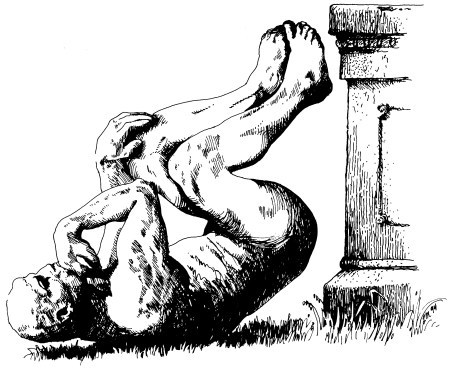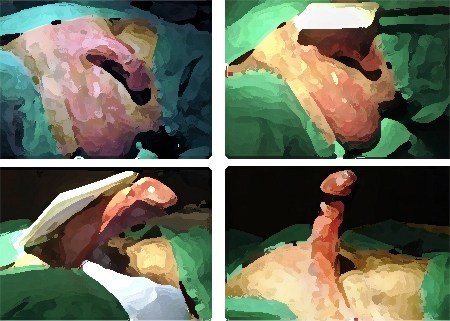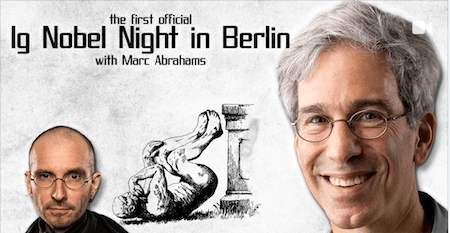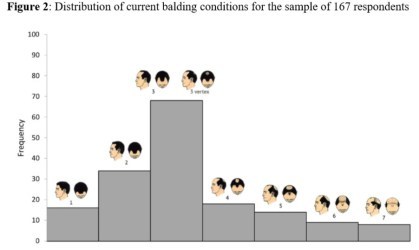Marc Abrahams's Blog, page 152
April 13, 2019
Just Says In Mice [a studied approach to certain studies]
“This twitter account calls out press releases of studies on mice that discuss the studies as if they were performed on humans,” says Samantha Joel.
The twitter feed is @justsaysinmice. The feed itself is the work of James Heathers.

April 11, 2019
FRIDAY night: Ig Nobel at the Tempodrom in BERLIN
Friday night, the Ig Nobel EuroTour arrives in Berlin.
April 12, Friday, 8:00 pm—Ig Nobel Night in Berlin—Tempodrom, Berlin, Germany— Marc Abrahams , with special guest celebrity forensic entomologist Mark Benecke (analysis of some forensic-science-related Ig Nobel Prize winners). TICKETS TICKETS TICKETS are now on sale. [Some background, about the Ig Nobel Prizes.] [PREVIEW in Die Zeit ], PREVIEW in Der Tagesspiegel ]
Tour Subsequent Event
After that, the Ig Nobel EuroTour will move on to Perugia, Italy, for the final event if the tour.

The impact of a quality table cloth in a restaurant [new study]
Does a high quality (e.g. fabric as opposed to paper) tablecloth affect customers’ enjoyment of a meal in a restaurant? Surprisingly perhaps, up until 2019, this question had not been scientifically examined. But now a team from the Department of Food Science, at the University of Copenhagen, Denmark and the Center for Food and Hospitality Research, Institut Paul Bocuse, France, have completed the first such study, examining the reactions of 247 paying (26 € per person) customers in a controlled experimental setting.
“The results demonstrated a fabric table linen contributed to a significant higher preference of the appetiser, first course consumed upon arrival, and of the meal quality in general. The fabric linen had no significant impact on the liking of the main dish and dessert, which were preferred similarly to that of paper table linen.“
It’s as yet unclear why the fabric cloth might have affected the main dish and dessert less than the appetiser.
See: The impact of tablecloth on consumers’ food perception in real-life eating situation in Food Quality and Preference, Volume 71, January 2019, Pages 168-171

April 10, 2019
THURSDAY afternoon: Ig Nobel in Oslo
Thursday afternoon, the Ig Nobel EuroTour arrives at the University of Oslo.

April 11, Thursday, 2:00 pm—University of Oslo, Norway, at Kristine Bonnevies Hus, Auditorium 3—”A truly intriguing talk with Marc Abrahams“
Tour Subsequent Events
After that, the Ig Nobel EuroTour will move on to Berlin, Germany, and then finish up in Perugia, Italy.

April 9, 2019
WEDNESDAY Ig Nobel at Stockholm University, livestreamed
Wednesday afternoon, the Ig Nobel EuroTour arrives at Stockholm University—featuring cookies, cannibalism, a-fly-in-wine, all sorts of other prize-winning things that make people LAUGH, then THINK. Also: 24/7 Lectures. Also: paper airplanes.

April 10, Wednesday, 3:00 pm—University of Stockholm, Sweden, in the Alba Nova—FREE ADMISSION, OPEN TO THE PUBLIC—[PREVIEW, PREVIEW]—Marc Abrahams and
Ig Nobel Prize winner Len Fisher (the optimal way to dunk a biscuit)
Ig Nobel Prize winner James Cole (Nutritional value of human cannibalism)
Ig Nobel Prize winners Paul Becher, Erika Wallin, Erik Hedenström, (detecting, by smell, the presence of a single fly in a glass of wine)
The 24/7 Lectures by: Ragnhild Lunnan, Jonas Sellberg, Rezan Güler, Sara Strandberg
A human-endurance demonstration by Max Kesselberg
This event will be livestreamed on Stockholm University’s Facebook page.
Tour Subsequent Events
After that, the Ig Nobel EuroTour will move on to Norway, Germany, and Italy (again).

Ig Nobel—Tuesday afternoon at the Karolinska Institute
Tuesday afternoon, the Ig Nobel EuroTour arrives in Stockholm, Sweden—featuring cookies, cannibalism, a-fly-in-wine, and all sorts of other prize-winning things that make people LAUGH, then THINK.

April 9, Tuesday, 3:00 pm—Karolinska Institute, Stockholm, Sweden, in the Biomedicum lecture hall—FREE ADMISSION, OPEN TO THE PUBLIC—[PREVIEW]—Marc Abrahams and
Ig Nobel Prize winner Len Fisher (the optimal way to dunk a biscuit)
Ig Nobel Prize winner James Cole (nutritional value of human cannibalism)
Ig Nobel Prize winners Peter Witzgall, Erika Wallin, Marie Bengtsson (detecting, by smell, the presence of a single fly in a glass of wine)
Tour Subsequent Events
After that, the Ig Nobel EuroTour will move on to Sweden (on Wednesday afternoon), then on to Norway, Germany, and Italy (again).

April 8, 2019
Willingness Toupee [new study]
“Some things in life money can’t buy. Unfortunately, hair isn’t one of them.” – explain a research team from the Department of Economics at Appalachian State University, US. They also point out that : “Balding men are willing to pay considerable amounts of money for an improvement in coverage.” – raising the question : “What’s the average willingness to pay to move from a glistening cue ball to a luscious mane?”
Their research, entitled ‘Willingness Toupee’ [geddit?] is published in the March 2019 edition of the journal Economic Inquiry.
And the answer to the question is, apparently, “About $30,000”
A full version of the paper is available here

April 7, 2019
Economic Consequences of Restrictions on the Usage of Cookies
The research project “Economic Consequences of Restrictions on the Usage of Cookies” has received funding to proceed.
The work is being done at Johann Wolfgang Goethe University Frankfurt am Main, under the direction of Prof. Dr. Berndt Skiera [pictured here]. The university explains:
So far, there exists very little empirical knowledge on the trade-off between user privacy and the economic value that website publishers, advertisers, and even users derive from cookies. As a result, policy makers have no way of telling whether their restrictions on cookies have the intended positive consequences for user privacy, or whether any benefits are outweighed by negative effects on the profits of companies—which policy makers also seek to nurture. The research project COOKIES (Economic Consequences of Restrictions on the Usage of Cookies) by Professor Bernd Skiera aims to close this gap. In the project, several data sets will be analysed, including a cookie dataset
(Thanks to Bob O’Hara for bringing this to our attention.)

April 4, 2019
Effect of swearing on strength and power performance (study)
 Dr Richard Stephens, of Keele University, UK, was a co-recipient of the 2010 Ig Nobel Peace Prize for confirming the widely held belief that swearing relieves pain. Since then, his work on swearing has continued, and he’s the lead author of a 2018 paper for the journal Psychology of Sport and Exercise (Volume 35, March 2018, Pages 111-117) which examined the effect of swearing on strength and power performance. Experimental participants, who swore, performed better on an exercise bike and at a hand-grip strength test. It’s as yet unclear exactly why.
Dr Richard Stephens, of Keele University, UK, was a co-recipient of the 2010 Ig Nobel Peace Prize for confirming the widely held belief that swearing relieves pain. Since then, his work on swearing has continued, and he’s the lead author of a 2018 paper for the journal Psychology of Sport and Exercise (Volume 35, March 2018, Pages 111-117) which examined the effect of swearing on strength and power performance. Experimental participants, who swore, performed better on an exercise bike and at a hand-grip strength test. It’s as yet unclear exactly why.
“Data demonstrate increased strength and power performance for swearing v. not swearing but the absence of cardiovascular or autonomic nervous system effects makes it unclear whether these results are due to an alteration of sympathovagal balance or an unknown mechanism.”
See: Effect of swearing on strength and power performance
Notes:
[1] “WARNING: This paper contains language that some readers may find offensive.”
[2] Scope for further research : as yet, the experiments haven’t investigated whether some swearwords might work better than others.

April 3, 2019
Using Magnetic Induction to Give a Cadaver’s Penis an Erection
Researchers used magnetic induction to get a rise out of, or into, a cadaver’s penis.
Details are in the study “Use of Magnetic Induction to Activate a ‘Touchless’ Shape Memory Alloy Implantable Penile Prosthesis,” Brian V. Le, Kevin T. McVary, Kevin McKenna, and Alberto Colombo, The Journal of Sexual Medicine, vol. 16, no. 4, April 2019, pp. 596-601.

Drawing by Nan Swift, Improbable Research staff, styled after photos in the medical study.
The authors, at University of Wisconsin Madison. Loyola University Medical Center, Northwestern University, and Southern Illinois University, report:
We describe a novel physiologic penile prosthesis that uses shape memory alloy properties to mimic the transition between a flaccid and erect penis using magnetic induction instead of hydraulic pressure…. The device was then tested implanted in an animal tissue model and in cadaveric tissue. Testing consisted of placing the device deactivated in its more malleable and compressed state, then activating it using an external inducer wand…
A cadaver was implanted with a latex-covered penile prosthesis using a modified surgical technique through a penoscrotal approach. An adapter to accommodate standard Boston Scientific rear tip extenders was created for the model using 3-D printing technology and used to mimic the standard rear-tip extender used in contemporary IPPs and improved the device anchoring in the corpora cavernosa. The implanted penile prosthesis was activated by waving the inductor along the shaft of the cadaver’s penis…. The prosthesis reached an almost complete activation.

Marc Abrahams's Blog
- Marc Abrahams's profile
- 14 followers






